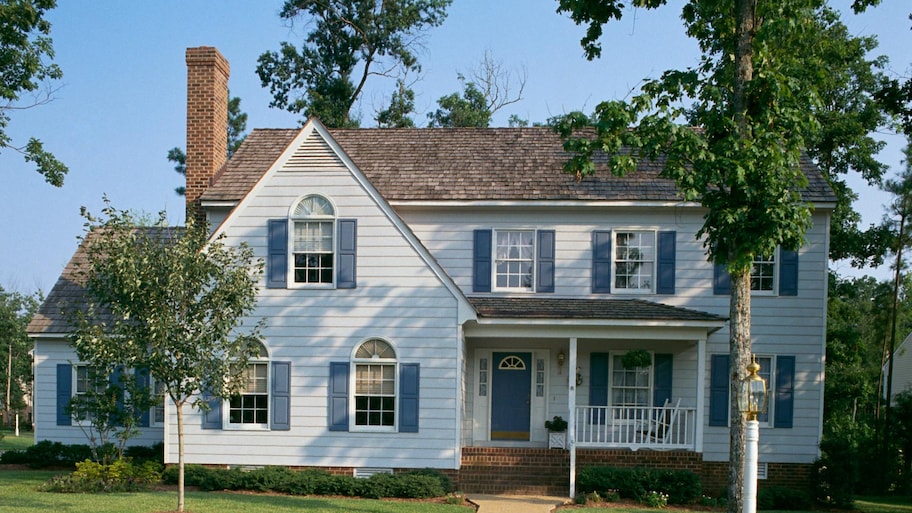What Is a Chimney Inspection? What to Expect
No, they probably won't tap dance


Highlights
Chimney inspections protect you from fire hazards and indoor air pollution.
There are three escalating levels of chimney inspections.
Inspection costs range from $80 to $6,300, depending on the level of inspection.
Chimney sweeping is a common add-on service to chimney inspections.
Experts recommend you have your chimney inspected at least once a year.
Who doesn’t love cozying up by the fire on a cold winter evening? If you live somewhere that gets chilly, an indoor fireplace is a huge asset through the cold months. To enjoy this benefit fully, be sure chimney inspections are on your home maintenance checklist. Getting regular chimney inspections ensures your chimney is functioning properly and that there are no serious issues. This quick guide will help demystify the process and get you well on your way to nights sipping hot cocoa by the fire.
Why You Need a Chimney Inspection
Chimney cleanings and inspections are both essential to ensure you can safely use your fireplace year-round. When you hire a pro to inspect the chimney, they will make sure all of its components are clean, intact, and working properly. Using a chimney that hasn’t been recently inspected poses a number of hazards.
Fire Risk
Uncleaned, uninspected chimneys are one of the leading causes of house fires, second only to faulty kitchen equipment. Smoke and soot build up in the chimney over time, creating an extremely flammable residue called creosote. If left for too long (either due to infrequent cleaning or another issue with the chimney components), you run the risk of setting this creosote alight, causing an extremely dangerous chimney fire.
Carbon Monoxide
Carbon monoxide (CO) is a type of gas produced during combustion. It’s tasteless, odorless, and invisible, but exposure to it in a closed room is extremely dangerous. If your chimney is blocked, either by excess buildup or because of a broken connector pipe or rusted heat exchange, carbon monoxide can flow into the home rather than out the chimney. Left unchecked, this is a serious health risk.
Indoor Air Pollution
If your chimney becomes blocked by debris, creosote buildup, or damaged components, it can create a reverse airflow, causing smoke and particulates to enter your home rather than escape outside. The fine particles produced in wood fires can cause respiratory issues, burning eyes, and runny noses. Over time, this can get more serious, worsening asthma symptoms, triggering heart problems, and leading to illnesses like bronchitis.
Chimney Inspection vs. Chimney Sweep
Chimney sweeping and chimney inspections are both vital to the health and safety of your home, and both should be done annually. Chimney sweeping is a cleaning that involves removing all the soot, debris, and other buildup that you’ve accrued over a year of burning fires. A chimney inspection is just what it sounds like—a check of all your chimney’s important components that ensures it’s up to snuff.
If it sounds like the two go hand in hand, it’s because they often do: A chimney sweeping service will often include a standard inspection. If you know you’re interested in getting both done at once, be sure to ask your chimney sweeping company before they visit.
How Often to Get a Chimney Inspection

To keep your home and family safe during the colder months, it’s recommended that you get your chimney inspected and cleaned at least once per year. Many people opt to do this in late summer or fall to ensure the fireplace is ready to use once the weather cools off.
If you install a new fireplace and chimney, you should get it assessed about halfway through its first heating system. This ensures that the components and installation are holding up, giving you the confidence you need to heat your home with a fire whenever you like.
How to Prepare for a Chimney Inspection
You can do a few things to prepare for a chimney inspection to make the whole process go as smoothly as possible. If you have any major questions or concerns beforehand, you can always contact your local chimney inspection pro and get answers quickly.
Move all furniture at least a few feet away from the chimney and cover it with either plastic or a drop cloth.
Move away rugs, tapestries, and anything delicate from your mantle.
Cool the chimney for at least 24 hours before the inspection, and don’t make a fire during this period.
If your door will be locked, ensure you’re home when the inspector comes, so you can let them in and show them where to go.
If you have easily frightened pets (or some who might be a little too curious), make sure you have a contained area for them during the inspection.
When your chimney inspector hands you the bill, they’ll probably also give you a chimney inspection report—this will help you understand your chimney’s condition and any problems. Your inspector may also suggest you schedule your future chimney inspection since lots of companies book up in advance, especially during peak times.
Chimney Inspection Costs by Level
During a chimney inspection, the inspector will look for damage, abnormalities, and hazards—this may be a damaged flue system, exterior damage, or cap and camper damage. Ensuring your inspector follows a thorough chimney inspection checklist will give you the confidence to use your fireplace whenever it suits you.
The cost of a chimney inspection depends on the level of inspection and your chimney size. Chimney inspectors typically offer three levels of inspection, and your inspector will determine the level based on your chimney condition and whether your home has undergone any major changes, incidents, or weather events. The standard for chimney inspection is a Level 1, but certain factors may qualify you for a higher level.
| Type of Inspection | What’s Included | Average Cost |
|---|---|---|
| Level 1 | Inspects readily accessible parts and confirms structure is intact | $80–$200 |
| Level 2 | Level 1 plus inspects roof, attic, crawl space, and internal components | $100–$500 |
| Level 3 | Level 2 plus inspects concealed areas for structural damage | $1,000–$5,000 |
Level 1
If your chimney is in good condition, you haven’t had issues with your fireplace, and you haven't changed your venting system, schedule a Level 1 chimney inspection. Your inspector will examine and check the accessible components of the chimney to ensure the structure is intact and each part is functioning properly.
Level 1 chimney inspection costs range from $80 to $200, depending mostly on the size of the chimney and the going rate for inspections in your area. The readily accessible chimney parts usually include the fireplace, firebox, damper, flue opening, and exterior parts sticking out from the roof. The inspector will also confirm that there are no obstructions or combustion deposits.
Level 2
During a Level 2 chimney inspection, your inspector will check the same accessible parts of your chimney as in Level 1, but they will also likely examine the attic, roof, crawl space, and basement to ensure nothing is damaged.
You’ll usually have a Level 2 inspection if you’ve made changes to your chimney—this might be a change in fuel type, a change to the shape of or material of flue, or purchasing a new liner. Your inspector will examine all internal surfaces and joints of flue liners with a camera. Depending on the size of your chimney, you can expect to pay anywhere from $100 to $500 for a quality Level 2 chimney inspection.
Typically, you’ll be required to have a Level 2 inspection if you’re selling your home or after an operation malfunction. Accidents such as hurricanes/bad storms, building fires, or chimney fires also warrant this type of inspection.
Level 3
If your chimney has a suspected hazard and your inspector can’t access concealed components—such as the chimney crown and interior chimney wall—you’re looking at a Level 3 inspection. Your inspector will use special tools to access these hidden parts and ensure manufacturing is sound. Sometimes, this requires rebuilding or removing certain parts, which often increases the total cost depending on the job’s complexity.
Level 3 chimney inspections are the most in-depth, so they command a higher rate. You should plan to pay anywhere between $1,000 and $5,000 for this type of inspection. The price can vary greatly because some chimneys are much harder to properly access for a thorough look.
Frequently Asked Questions
There are a few things you can look out for to ensure your chimney is safe to use. Check for the following issues:
Cracks or missing pieces in the masonry of the chimney
Creosote buildup in the chimney, which is a black, tar-like substance
Cracks, stains, or scorch marks in the firebox
Water stains in or around the fireplace
A broken or stuck damper
There are several signs that your chimney is dirty and ready for cleaning. Look for the following:
A buildup of creosote and soot inside the chimney
The room fills with smoke when you use the fireplace
The damper is black with creosote residue
When you light a fire, it quickly goes out
In general, it’s best to schedule a cleaning at least once a year before winter so you can safely use the fireplace.

